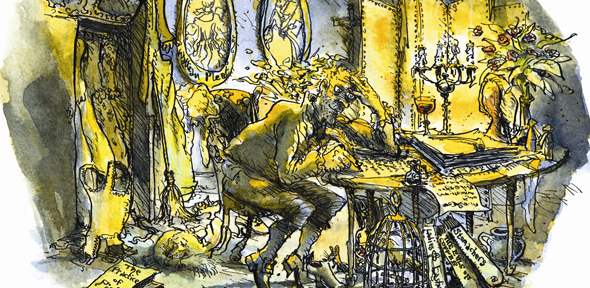
For a fleeting moment in the early 18th century, the sharpest satirical journalism was reputed to come from a modest Cambridge college.
The Female Tatler was in circulation for just nine months after it was started in July 1709 as a rival to its more famous male namesake.
It was clearly a trailblazer for the plethora of similar, modern-day glossy publications such as Cosmopolitan and Marie Claire, crammed as it was with satirical portraits, theatre gossip and mock adverts, with its editor – one Phoebe Crackenthorpe – dispensing wide-ranging advice to fashionable young ladies.
The Female Tatler also had a strong – if occasionally disputed – connection with Cambridge. For Phoebe Crackenthorpe was none other than Sidney Sussex student Thomas Baker, a moderately successful playwright who had enrolled at the college in 1709 to do an MA.
That, at least, is the assertion made in Sidney Sussex A History by Cambridge alumnus Richard Humphreys.
“It was one of the first women’s magazines and Baker obviously thought: ‘Hang on, there must be a ladies’ market for such publications’,” says Mr Humphreys.
The identity of Phoebe Crackenthorpe has been debated since the launch of the magazine. Some historians have argued that Delarivier Manley, a female novelist, playwright and pamphleteer, was the creative force behind the journal.
But Humphreys isn’t persuaded. He points to a poem in the contemporary journal The British Apollo that appears to confirm the theory that Baker was editor by saying the playwright wore a female disguise and “lives upon scandal”. An entry in the Oxford Dictionary of National Biography also states that the Sidney student wrote under the pseudonym Phoebe Crackenthorpe.
“All the evidence I have seen suggests that Baker is the man," he adds.
Frugality and restraint
Man or woman, the editor of The Female Tatler certainly had strong views about how women of the age should behave, espousing the qualities of frugality, prudence and tasteful restraint to his/her readers.
The magazine’s tone was socially conservative, with a belief that ladies should dress and behave according to their social status. Those who had recently acquired wealth, and who were seen to lack social graces, were roundly mocked in the ‘FT’s’ pages.
But Ms Crackenthorpe was clearly a feminist at the same time, and was scathing of the constraints of beauty and women’s education. In issue number 88 she remarked: “How can people in their senses think that the fine clothes and all the trinkets that are given us are bestowed upon the sex any other ways than playthings are given to children to amuse, keep their thoughts employed and their hands from doing of mischief?”
Labelling marriage a “fatal snare”, she insisted that ladies ought to control their husbands by feminine wiles and sensuous charm.
The journal came to an end in March 1710, although Baker’s tenure as editor was reputed to have ended five months’ earlier when Ms Crackenthorpe resigned to join ‘a Society of Modest Ladies’, a coded reference, Mr Humphreys believes, to his entering the church.
That would certainly tie in with the rest of Baker’s life: he became rector of Bolnhurst, near Bedford, in 1711 and vicar of nearby Ravensden from 1716 until 1731. He died in 1749 – possibly with a secret or two.
